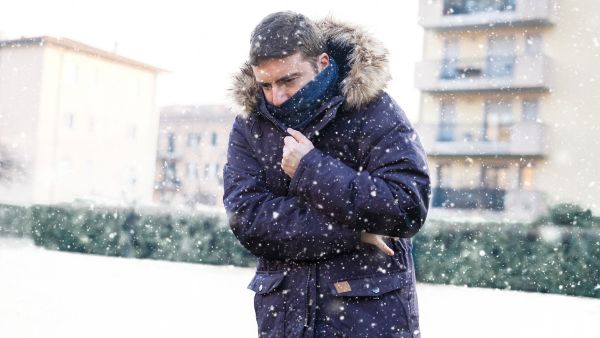When facing extreme cold weather conditions, staying warm is crucial for both comfort and safety. Heated clothing offers an innovative solution by providing an extra layer of warmth through built-in heating elements.
Here we will guide you through the essential steps of dressing for extreme cold weather using heated clothing. By following these tips, you can effectively combat the freezing temperatures and ensure maximum warmth and protection.
Layering is Key
Start with a base layer made of moisture-wicking material to keep your skin dry and prevent moisture buildup, which can lead to discomfort and chills. Choose thermal underwear or performance base layers that are snug but not restrictive. This layer will help regulate your body temperature and keep you warm.
Select Insulating Layers
On top of your base layer, add insulating layers to trap and retain heat. Opt for fabrics like fleece, down, or synthetic insulation that provide excellent thermal properties. Consider a heated mid-layer garment, such as a heated vest or jacket, which can provide additional warmth through its built-in heating elements. Adjust the heat settings according to your comfort level and the temperature.
Opt for Windproof and Waterproof Outerwear
Invest in a windproof and waterproof outer layer to protect yourself from biting winds and precipitation. Look for jackets or parkas made from materials designed to block wind, and ensure they have sealed seams and a durable water-repellent (DWR) finish to keep you dry in snowy or rainy conditions.
Choose Insulated Pants or Overalls
In extreme cold, it’s crucial to protect your lower body as well. Opt for insulated pants or overalls that provide an extra layer of insulation. Look for options with built-in heating elements to enhance warmth further. Insulated snow pants or thermal leggings can also be layered underneath for added insulation.
Don’t Forget Your Extremities
Protecting your extremities is essential in extreme cold. Invest in heated gloves or mittens with integrated heating elements to keep your hands warm and maintain dexterity. Consider wearing glove liners for added warmth. For your feet, choose thermal socks made from insulating materials like wool or synthetic blends. Pair them with heated insoles to combat the cold and keep your feet comfortable.
Cover Your Head and Neck
A significant amount of heat can be lost through the head and neck. Wear a thermal hat or a beanie that covers your ears to retain heat. Consider a balaclava or neck gaiter to protect your neck and lower face from the cold. These accessories can also be equipped with heating elements for added warmth.
Protect Your Eyes and Skin
Extreme cold weather can be harsh on your eyes and exposed skin. Wear goggles or sunglasses to shield your eyes from wind, snow, and glare. Apply a moisturizing sunscreen to any exposed skin, as cold and dry air can lead to skin dryness and chapping.
Choose Appropriate Footwear
Select insulated and waterproof boots with good traction to keep your feet warm and prevent slipping on icy surfaces. Look for boots with insulation and a thick sole for added protection against the cold ground. Consider heated insoles for additional warmth and comfort.
Powering Your Heated Clothing
Ensure your heated clothing battery packs are fully charged before venturing out into extreme cold. Follow the manufacturer’s instructions for charging and operating your heated garments. Keep spare batteries if needed, and be mindful of the battery life to ensure uninterrupted warmth throughout your outdoor activities.
Adjust Your Layers
While heated clothing provides an excellent source of warmth, it’s essential to monitor your body temperature and adjust your layers accordingly. If you start to feel too warm, lower the heat settings or remove a layer to prevent overheating and excessive sweating, which can lead to discomfort and even hypothermia in extreme cold conditions.
Stay Hydrated
It’s easy to overlook hydration in cold weather, but it’s just as important as in warmer temperatures. Drink plenty of fluids to stay hydrated and maintain your body’s natural functions. Opt for warm beverages like herbal tea or hot water with lemon to keep you warm from the inside.
Take Breaks Indoors
Even with the best heated clothing, it’s essential to take breaks indoors periodically. Extreme cold can still take a toll on your body, and spending extended periods outdoors can increase the risk of cold-related injuries. Warm up in a sheltered area, remove any damp clothing, and allow your body to recover before heading out again.
Be Mindful of Frostbite
In extreme cold, frostbite is a significant concern. Keep an eye out for signs of frostbite, such as numbness, tingling, or a white or grayish color on your skin. If you suspect frostbite, seek shelter immediately and warm the affected area slowly by immersing it in warm water (not hot). Avoid rubbing or massaging the area, as it can cause further damage.
Practice Safety Measures
While heated clothing provides added warmth, it’s essential to remember other safety measures when venturing into extreme cold weather. Let someone know your plans and estimated return time, and carry emergency essentials such as a cell phone, a first aid kit, and emergency blankets. Stay aware of weather conditions and heed any warnings or advisories issued.
Conclusion
Dressing for extreme cold weather requires careful consideration and the right gear. By incorporating heated clothing into your layering system, you can enhance your warmth and comfort significantly. Follow these important tips to ensure proper insulation, protection from the elements, and optimal use of your heated garments. Stay safe, stay warm, and enjoy your outdoor activities even in the coldest of temperatures.

For over 12 years, I have been testing and reviewing heating technologies that overcome cold weather conditions. In recent years, I have specialized in the heated apparel. I’ve made it my mission to educate people about heated clothing.
